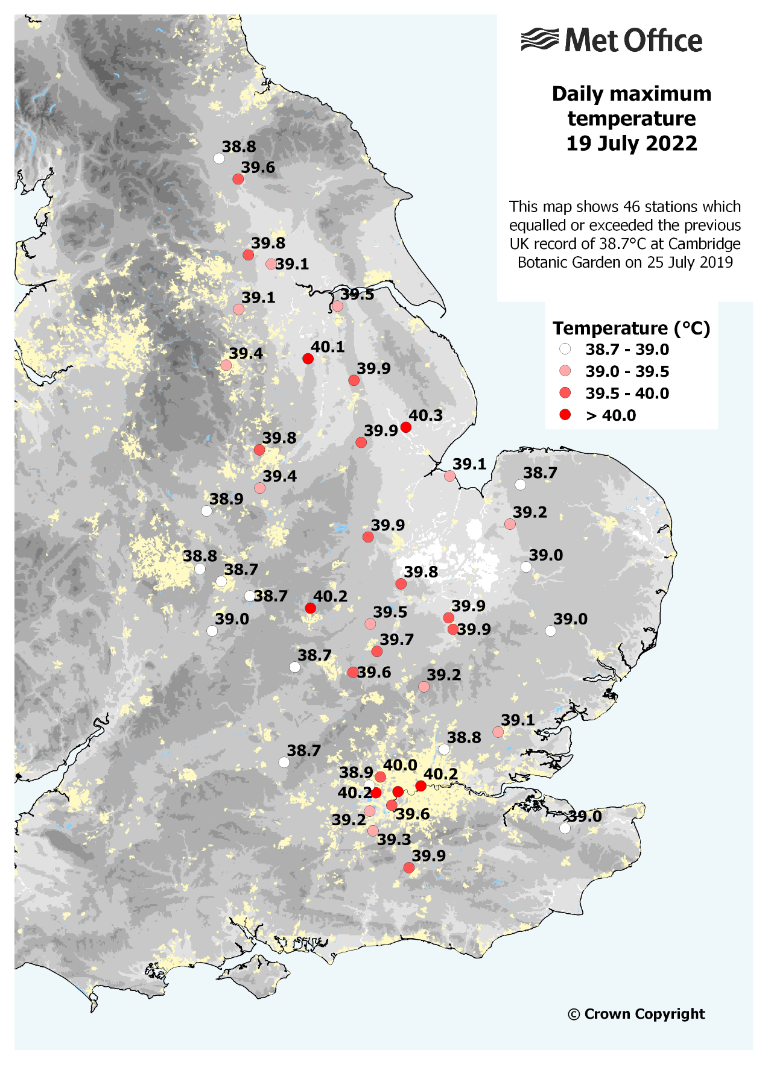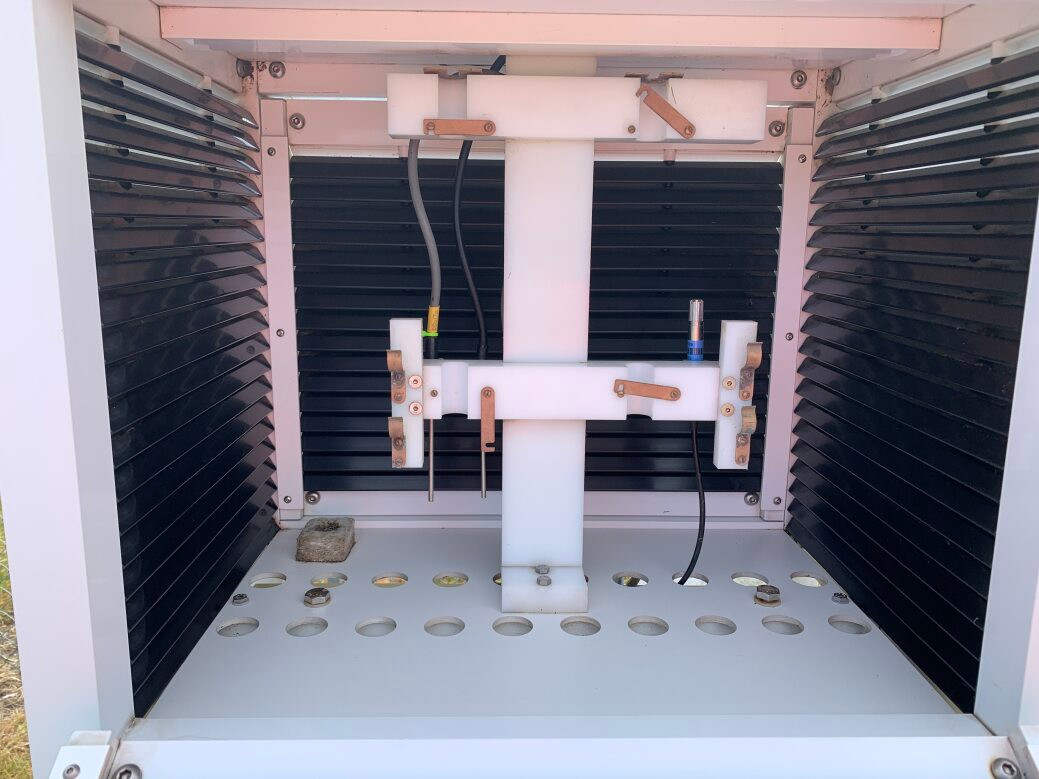Observations critical for weather and climate
Weather observations are critical to our understanding of weather and climate.
There is no doubt our climate is warming, 2022 was the UK’s warmest year since the start of Met Office records in 1884 and the extreme heatwave in July 2022 marked a milestone in our climate history, with 40 °C being recorded for the first time in the UK.
How do we ensure our observations are reliable?
The Met Office maintains around 300 land synoptic weather observation sites together with 150 voluntary climate sites reporting daily, or in the case of synoptic sites hourly or minute values into the Met Office databases. The data collected at these sites can vary, but temperature, rainfall, humidity, and air pressure are the most common data recorded.
Consistency of measurements is vital across the network, both for informing our forecasts and for the long-term weather and climate records of the UK. Much of the observation equipment across the UK is housed in a Stevenson Screen, a white slatted box with a north facing door, 1.25 metres above the ground. To ensure this consistency, weather stations follow global guidelines, provided by the World Meteorological Organization. This includes specific standards on , for instance, the levels of hard surfaces, such as paths within the observation area, and having sufficient clear space for the weather station to be free from the influence of non-meteorological factors on the readings. For example, outdoor instruments should be installed on level ground, it should be away from the immediate influence of trees, buildings, hedges, fences and other obstructions. More information can be found here.
Weather station locations
The Met Office maintains a network of observing sites located in a range of different environments across the country. Both routine quality control of data and verification of site records include comparisons with neighbouring sites, and sites that exhibit significant deviations in behaviour are investigated. Routine site inspections will also carefully consider the exposure and potential heat sources that could influence a site, and any locations that are below the required standard would not be quoted for official records.
The Met Office operates some observing sites at airfields (many of which form historical records). It is important that airfields and airports receive and have access to accurate and timely meteorological data. Observing stations at airfields are located to be as representative of the wider environment as possible and practical. This includes being placed sufficiently far from runways to avoid contamination from aircraft activity.

Daily maximum temperature 19 July 2022 - this map shows 46 weather stations in the UK which equalled or exceeded the previous UK record 38.7 degrees.
More about our temperature readings
Temperatures quoted in Met Office weather forecasts are air temperatures and mainly come from thermometers housed in Stevenson Screens located at weather stations that meet specific criteria. The Screen keeps the thermometer away from direct sunlight but the airflow constant and ensures consistency of readings across the UK. These temperature readings are referred to as air temperature as the thermometers are approximately 1.25 m above ground level.

Inside a Stevenson screen, Leuchars, Fife, Scotland.
The temperature at the ground surface, often referred to as the land surface temperature, is also an important meteorological and climatological parameter. These measurements are made by satellites and also thermometers in contact with the ground. They are useful for a range of applications, for example risk of frost, or potential for overheating in urban areas, and are used by scientists and science organisations, but do not form part of normal weather data communicated through weather forecasts or weather charts most people are familiar with.
All our weather stations are regularly monitored, inspected, and if necessary, undergo repairs and upgrades to ensure consistency of measurements. If a national record is broken, a specialist team will visit the observation site and carry out a rigorous inspection. That inspection and review can lead to the rejection of some records or observations and this process means we have confidence in the observations we verify as national records.
Met Office datasets date back many years. Met Office adopt a range of rigorous quality assurance processes to ensure that our data are a reliable and vital source of information underpinning climate science. This data tells us how today's weather differs from the long-term average in the UK climate and how our climate has changed over timescales of decades or centuries.
The misinformation you may encounter
- The Met Office has started using land surface temperatures instead of air temperature in its weather forecasts.
Our response: The temperature quoted in Met Office weather forecasts are air temperatures and mainly come from thermometers at 1.25m above the ground, housed in Stevenson Screens. This temperature reading is referred to as the air temperature.
The temperature at the ground surface, often referred to as the land surface temperature, is also an important meteorological and climatological parameter. These measurements are made by satellites and thermometers in contact with the ground. They are useful for a range of applications, for example risk of frost, or potential for overheating in urban areas, and are used by scientists and science organisations but do not form part of normal weather data communicated through weather forecasts or weather charts most people are familiar with.
The Met Office has not started using ground temperatures to make the weather sound hotter than it is.
- Temperature records are inconsistent because Met Office observations sites are not well maintained.
Our response: To ensure consistency of weather data, weather stations follow internationally agreed guidelines, provided by the World Meteorological Organization (WMO). Met Office weather observation sites are monitored, and regularly inspected to ensure they comply with these guidelines and if necessary, undergo repairs and upgrades to ensure consistency of measurements. More information can be found here.
If a national record is broken a specialist team will visit the observation site and carry out a further rigorous inspection. That inspection and review can lead to the rejection of some records or observations.
- Temperatures should not be recorded at airfields as they can be contaminated by aircraft activity.
Our response: The Met Office operates some observing sites at airfields (many of which form historical records). It is important that airfields and airports receive, and have access to, accurate and timely meteorological data. Observing stations at airfields are located to be as representative of the wider environment as possible. This includes being placed sufficiently far from runways to avoid contamination from aircraft activity and sites that exhibit significant deviations in behaviour are investigated.
- Changes to temperature measuring equipment over the last century are responsible for increasing UK temperatures.
Our response: A number of developments have occurred in temperature measuring equipment over recent years, such as the discontinuation of the use of mercury thermometry and its replacement by digital equipment. Equipment is regularly checked while in use and changed as required if faulty or approaching tolerance limits. Changes, for whatever reason, are implemented following careful quality assurance and laboratory calibration to ensure consistency of records.
The Met Office hold large amounts of information on the changes implemented at individual stations including records of measuring equipment and its calibration on the MIDAS database (which is available here). More information can be found here.


